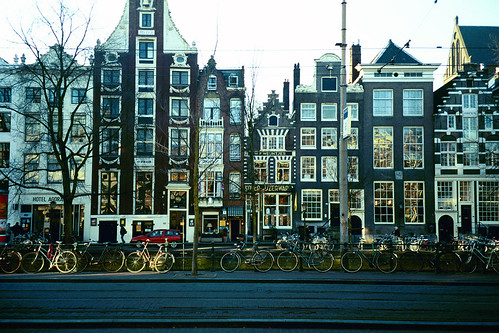Cities have changed drastically since the onset of the industrial age, and the needs of today’s ever-growing population are far different than the ones of depression era workers and baby boomers. New advances present as many obstacles as they do opportunities, and it’s up to modern urban planners to use what is at their disposal in ways that benefit the largest number of people possible. That’s why it’s helpful to look at history and examine it in the light of the present; old cities were built on sound principles that can still be utilized today.
Origins of Urban Planning
Urban planning mostly arose as a response to various crises that faced city-dwelling populations. Some such crises include worker oppression, disease, overcrowding and pollution. One solution that was utilized in England was garden cities. This design placed greenery within the town square, and it provided easy access to employment and key services while also providing plenty of land on the outskirts that could be used for farming, housing and recreation. It was a comprehensive solution to nearly every problem that also increased human happiness by introducing nature to an environment where it had been mostly absent in the wake of industrialization.
Urban Planning Today: Tokyo
Tokyo faces a number of challenges related to sustaining the city over the long-term. In 1995 a massive earthquake nearly leveled Kobe and killed over 6,000 people. Likewise, Tokyo needs to invest in new sources of energy in the wake of the nuclear meltdown that occurred following the 2011 tsunami.
The major issues of today are a far cry from the challenges Tokyo faced hundreds of years ago. There was a time when merely keeping people fed received the most attention by those in government. In 1707, Mt. Fuji erupted and covered the land in volcanic ash. This posed a threat to farmers and anyone who breathed it in, and it led to secondary disasters later on. The one constant among the threats Tokyo has faced is earthquakes, and building infrastructure that can withstand severe earthquakes while also providing access to the energy needed to fuel the technological mecca of the world is the challenge that will determine whether Tokyo remains a major city decades down the line.
Urban Planning Today: Amsterdam
Amsterdam’s history extends all the way back to the 1300s. It became the world’s wealthiest city in the 17th century but entered a decline sometime before the industrial revolution. One of the major issues that the residents of Amsterdam faced in the early 20th century was famine, but such a crisis hasn’t occurred since then thanks to new policies and global trade.
Today Amsterdam is a city that focuses heavily on sustainability. Amsterdam has a mild climate and rarely finds itself on the brunt of natural disasters, and that means the primary focus can be placed on harnessing new forms of energy to power the city in the face of the global energy crisis. Amsterdam also faces issues with keeping the streets clean as it can be difficult to find the right balance between machines that are effective and the ones that produce too much noise pollution.
Since the problems that Amsterdam faces are incredibly mild compared to major cities across the world, it’s likely that new and creative endeavors are likely to be undertaken as struggles give way to experimentation. Amsterdam is a city to watch because it may provide the solutions that the rest of the world utilizes in the future.
In Closing
The challenges that urban planners face will only become more complicated as populations age and expand and traditional fuels become scarce. Sound urban planning strategies may mean the difference between cities that survive and cities that are overwhelmed by compounding crises. Knowing how problems were solved in the past and how they’re being addressed today will carve a path to the future, and hopefully those working in urban planning today will be able to create a better tomorrow.
Author bio:
Heidi Novak writes on community and city development, with an eye towards the cities of tomorrow. If you’re interested in helping build those cities, you might want to check out urban planning degrees offered at schools such as the University of Florida.








You must log in to post a comment.